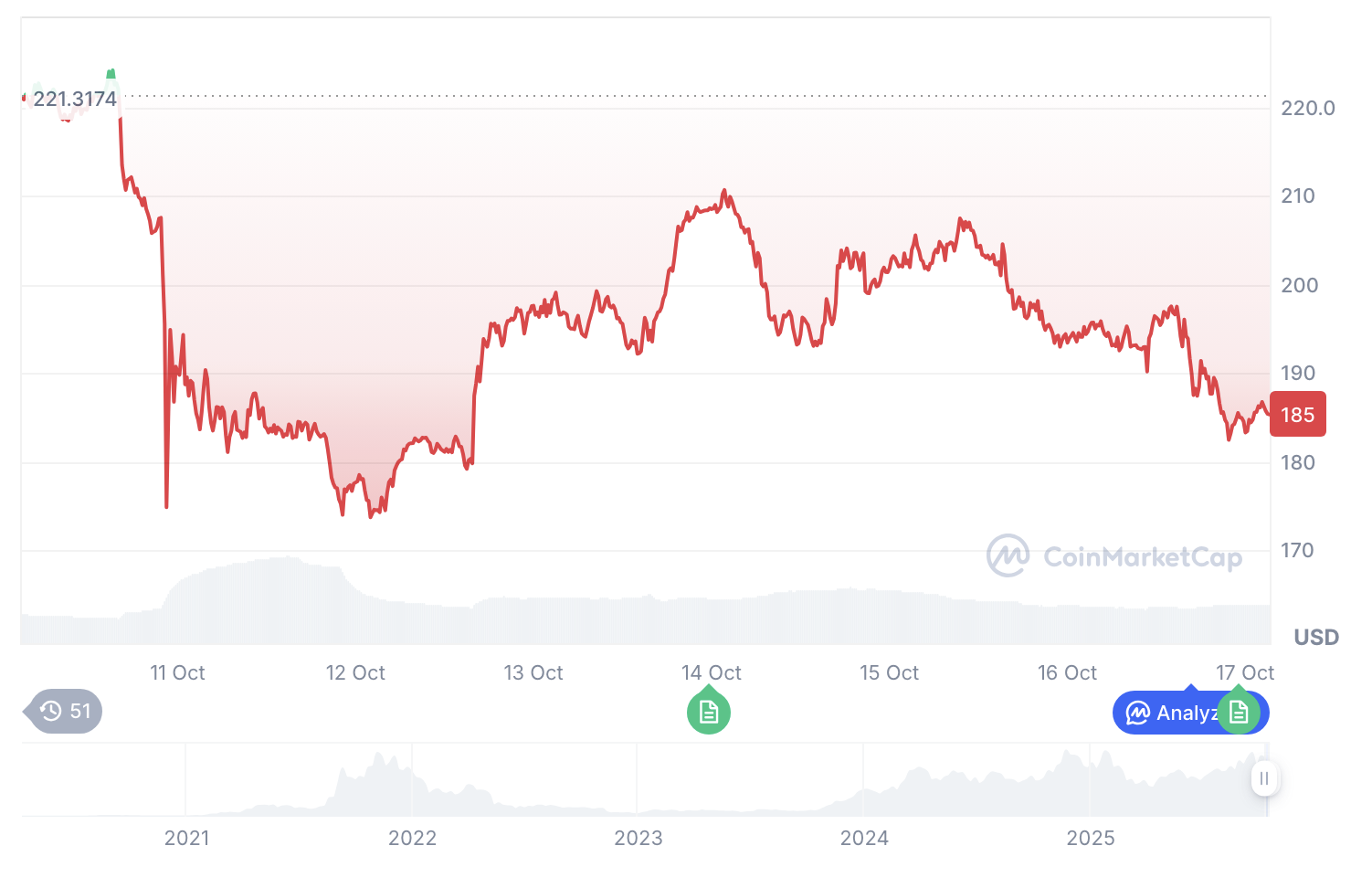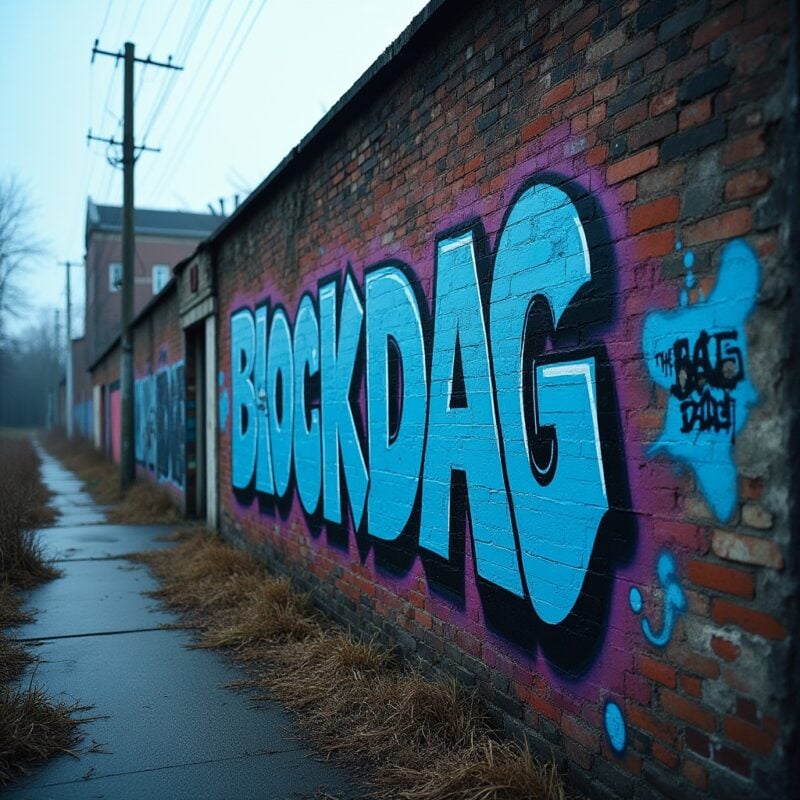Daylight, a decentralized physical infrastructure network focused on distributed solar energy, closed a $75 million funding round on October 16 to expand its subscription-based solar coverage across the United States. Meanwhile, AI data centers strain existing power grids, with wholesale energy prices near data centers surging 267% since 2020, according to Bloomberg.
Tech giants, including Google, Amazon, Meta, and Microsoft, are exploring alternative energy sources, with Amazon signing deals for 1,920 megawatts of nuclear power in June.
For investors seeking quick liquidity and explosive growth, DePIN’s measured approach offers different risk-reward characteristics than AI-driven tokens. DeepSnitch AI operates entirely on-chain with no physical requirements. It’s selling fast already, and it’ll be ripe for rapid scaling once it launches.
Lost Bitcoin recovery law passes California legislature
California lawmakers approved legislation on October 16 allowing the state to recover lost Bitcoin from dormant wallets and criminal forfeitures rather than auctioning seized crypto immediately.
Executive Order 2025 mandates that cryptocurrency confiscated in criminal or civil cases be allocated to strategic reserves rather than sold at market, potentially strengthening Bitcoin’s perception as a viable state-held asset. Analysts note this move may complement ongoing institutional accumulation and ETF inflows, bringing stability to the broader market structure.
Clearly, there’s a shift happening in how governments view cryptocurrency, from a speculative asset requiring immediate liquidation to a strategic holding worth accumulating long-term. As states and nations build Bitcoin reserves, the legitimacy argument for cryptocurrency strengthens. However, the regulatory patchwork also creates confusion that makes transparent, audited projects more valuable.
Is BlockDAG legit in this evolving landscape? With 18 months of presale activity, shifting launch dates, and no on-chain proof of fundraising amounts, BlockDAG raises questions that California’s new legislation makes more urgent.
Is BlockDAG safe? Where to place bets
DeepSnitch AI: Audited security meets AI innovation
DeepSnitch AI addresses information asymmetry by democratizing whale-level surveillance tools. Audited by both Coinsult and SolidProof, DeepSnitch AI offers security verification that BlockDAG’s legitimacy questions make essential.
The dual-audit approach provides transparency missing from projects with 18-month presales and shifting timelines. DeepSnitch AI publishes presale data openly, with over $429K raised at $0.01915 in Stage 2. And unlike BlockDAG’s indefinite fundraising, DeepSnitch AI operates on a defined timeline.
Features will roll out progressively, and early investors will have priority access. The program offers dynamic APR adjusting based on pool participation, with free withdrawals and no lock-up periods once claiming opens post-presale. This structure contrasts sharply with BlockDAG’s unclear token release mechanics and absent withdrawal functionality during the prolonged presale period.
October momentum is lifting AI sector tokens, which jumped above 4% even as Bitcoin dropped below $112K. DeepSnitch AI sits at the intersection of blockchain adoption and AI market expansion, offering utility that becomes more valuable as markets get more complex. This is the transparent alternative to BlockDAG that investors can trust without hesitation.
Is BlockDAG legit? Concerns mount after 18-month presale
Is BlockDAG legit or just another prolonged fundraising scheme? The project claims to have raised between $214 million and $420 million, depending on the source, yet provides no public on-chain proof to verify either figure.
Crypto investigator ZachXBT tagged BlockDAG as a “fake project” on social media back in August, alleging the presale has dragged on for 1.5 years while “regularly transferring investor funds to various exchange accounts” and marketing “fake numbers to increase retail fomo.”
The accusations surfaced after LBank announced plans to list BlockDAG’s BDAG token without specifying a timeline, continuing a pattern of vague promises. Trustpilot reviews paint a troubling picture.
Security assessment firm Gridinsoft assigned BlockDAG a trust score of 30 out of 100, placing it in “risky territory” and advising extreme caution. The analysis flagged patterns suggesting questionable cryptocurrency investment opportunities that could result in financial losses. 99Bitcoins concluded that while CertiK and Halborn have audited BlockDAG’s smart contracts, these audits do not cover the Layer-1 blockchain itself, the core technology the project claims is revolutionary.
So, is BlockDAG real or fake?
The roadmap, which projected Q2 2025 completion for key features, remains months behind schedule. For investors asking if BlockDAG is legit, the evidence suggests extreme caution is warranted before putting capital into a presale with no clear end date and mounting red flags.
Solana: ETF decisions could unlock institutional capital
Solana traded around $186 on October 16, down 4.8% as broader selling pressure hit altcoins. With the SEC facing final deadlines on 16 crypto ETF applications this month, including Solana, XRP, and Litecoin, October could mark a turning point for altcoin accessibility.
Bloomberg analysts place approval odds above 90% for multiple filings, and if Solana secures ETF approval, institutional capital could flow directly into SOL, skipping the friction of current onboarding processes.

Solana’s network continues processing transactions with minimal fees, and Layer-2 growth on Ethereum has validated demand for fast, cheap blockchains. Most analysts are targeting $250 to $300 by year-end, and these figures ride on ETF approvals. That represents roughly 35% to 60% gains.
For traders seeking asymmetric bets, Solana provides stability and liquidity, but DeepSnitch AI offers the risk-reward profile that defines cycle-making trades. Solana will likely follow Bitcoin’s direction, while DeepSnitch AI could decouple entirely if its AI agents prove indispensable when markets turn chaotic again.
The bottom line
ZachXBT’s allegations, combined with 18 months of presale activity, shifting launch dates, a 2.5-star Trustpilot rating, and Gridinsoft’s 30/100 trust score, raise serious concerns about BlockDAG’s legitimacy. While the project produced a testnet and audit reports, the lack of on-chain fundraising proof, concrete deliverables, and functional token withdrawals suggests investors should exercise caution.
DeepSnitch AI, on the other hand, offers a transparent alternative with Coinsult and SolidProof audits, publicly verifiable presale data, and a clear roadmap. Priced at $0.01915 with $429K raised and Stage 2 nearing completion, it combines AI-driven surveillance tools with the security and transparency that BlockDAG’s critics say the project lacks.
For those asking if BlockDAG is legit, the evidence leans troubling. For those seeking legitimate presale opportunities with verified security, DeepSnitch AI provides the transparency institutional standards now demand, with plenty of potential to 100x.
Visit the DeepSnitch AI website for all the details.
FAQs
Is BlockDAG legit or a scam?
Crypto investigator ZachXBT flagged BlockDAG as a “fake project,” noting the 18-month presale with no end date and unverified fundraising claims. BlockDAG legitimacy concerns include shifting launch dates, a 2.5-star Trustpilot rating, and a lack of on-chain proof.
What makes DeepSnitch AI safer than BlockDAG?
DeepSnitch AI passed audits from both Coinsult and SolidProof, offers transparent presale data, and operates on a defined timeline ending no later than January 31, 2026. These factors address BlockDAG’s safety concerns plaguing projects with prolonged presales and unclear deliverables.
Can BlockDAG still succeed despite the red flags?
While some users defend BlockDAG’s testnet and partnerships, the BlockDAG real or fake debate hinges on 18 months of undelivered promises. DeepSnitch AI offers similar upside potential with far greater transparency and security verification.
Disclaimer: This media platform provides the content of this article on an "as-is" basis, without any warranties or representations of any kind, express or implied. We assume no responsibility for any inaccuracies, errors, or omissions. We do not assume any responsibility or liability for the accuracy, content, images, videos, licenses, completeness, legality, or reliability of the information presented herein. Any concerns, complaints, or copyright issues related to this article should be directed to the content provider mentioned above.








